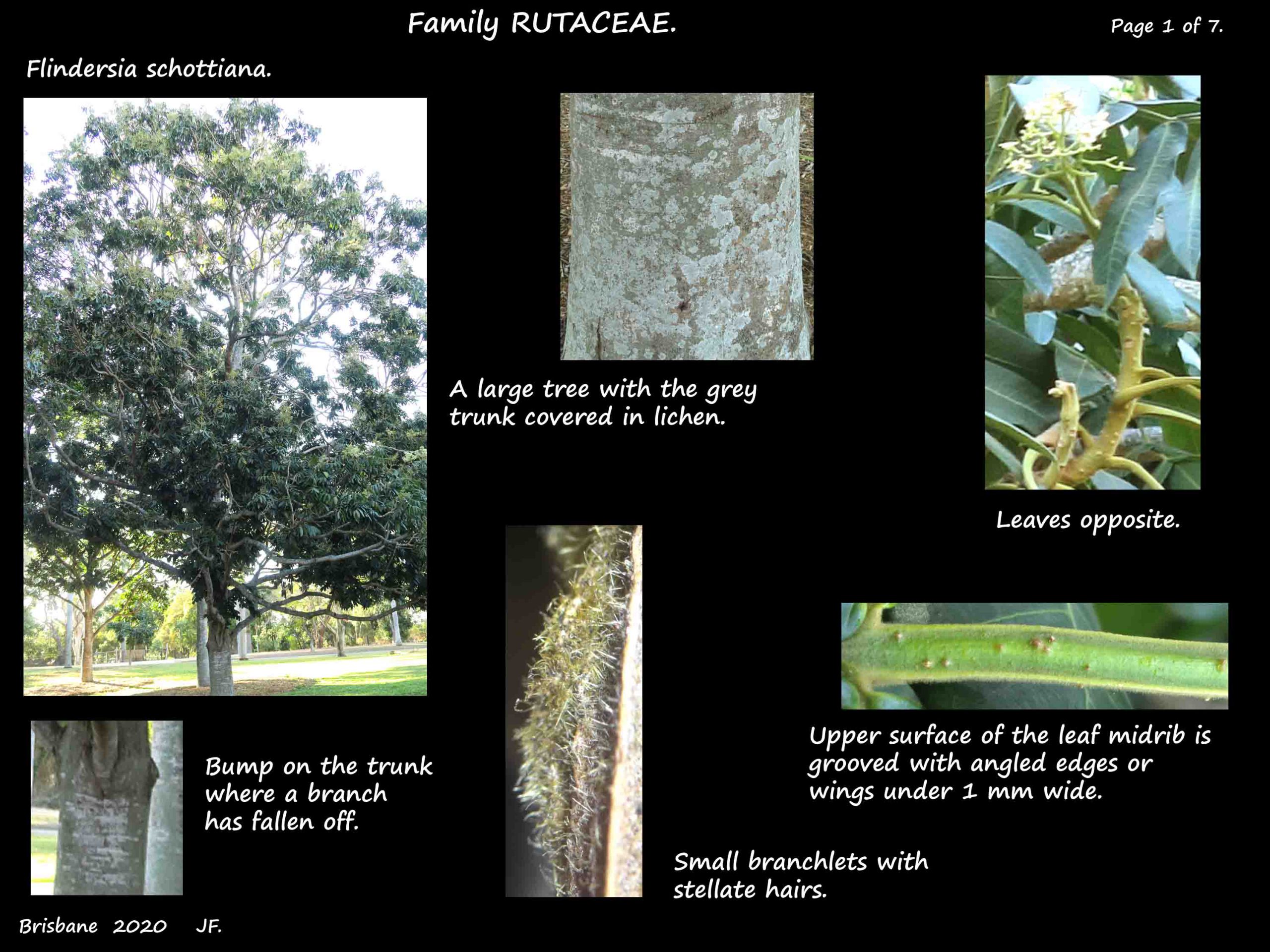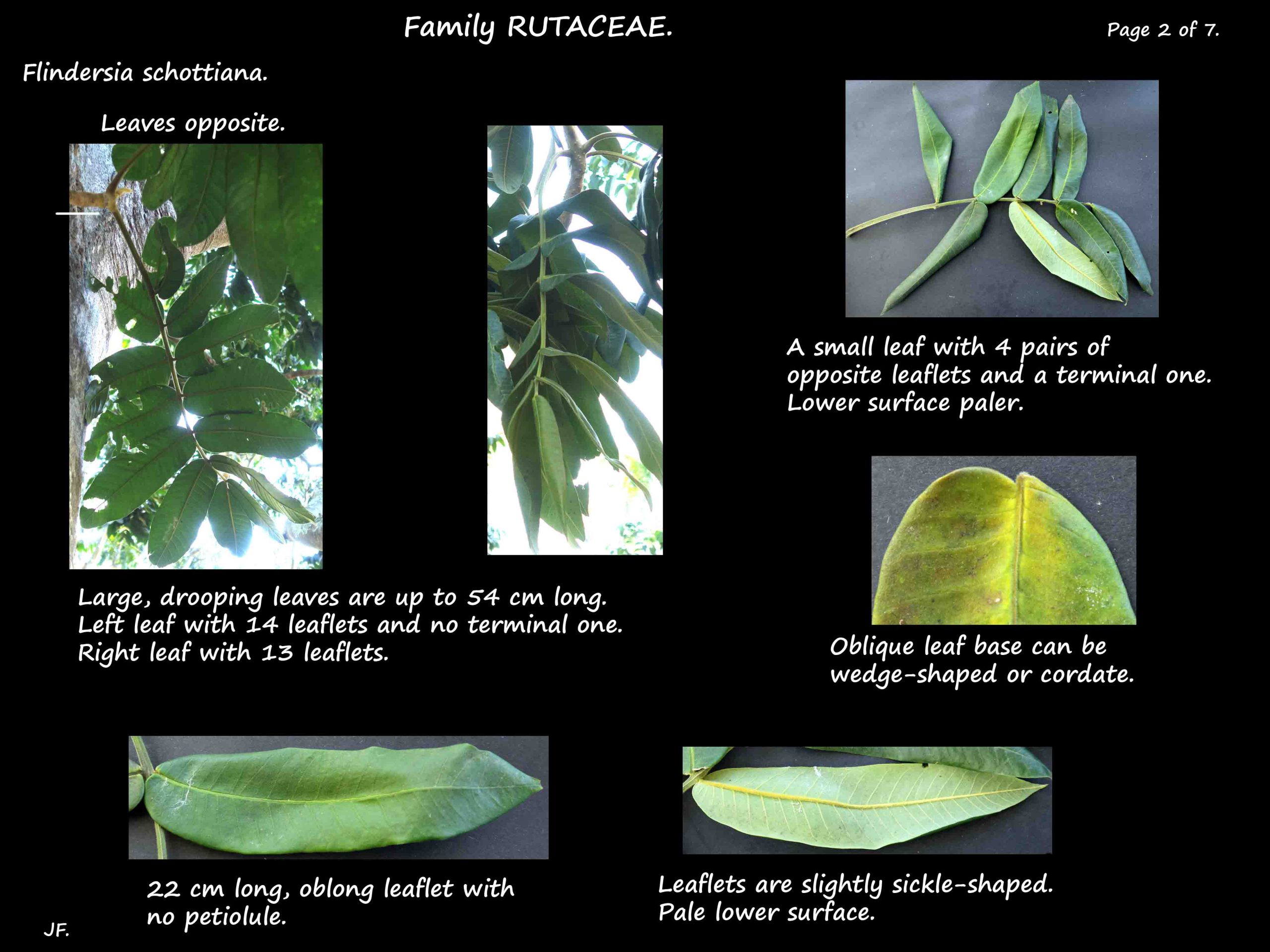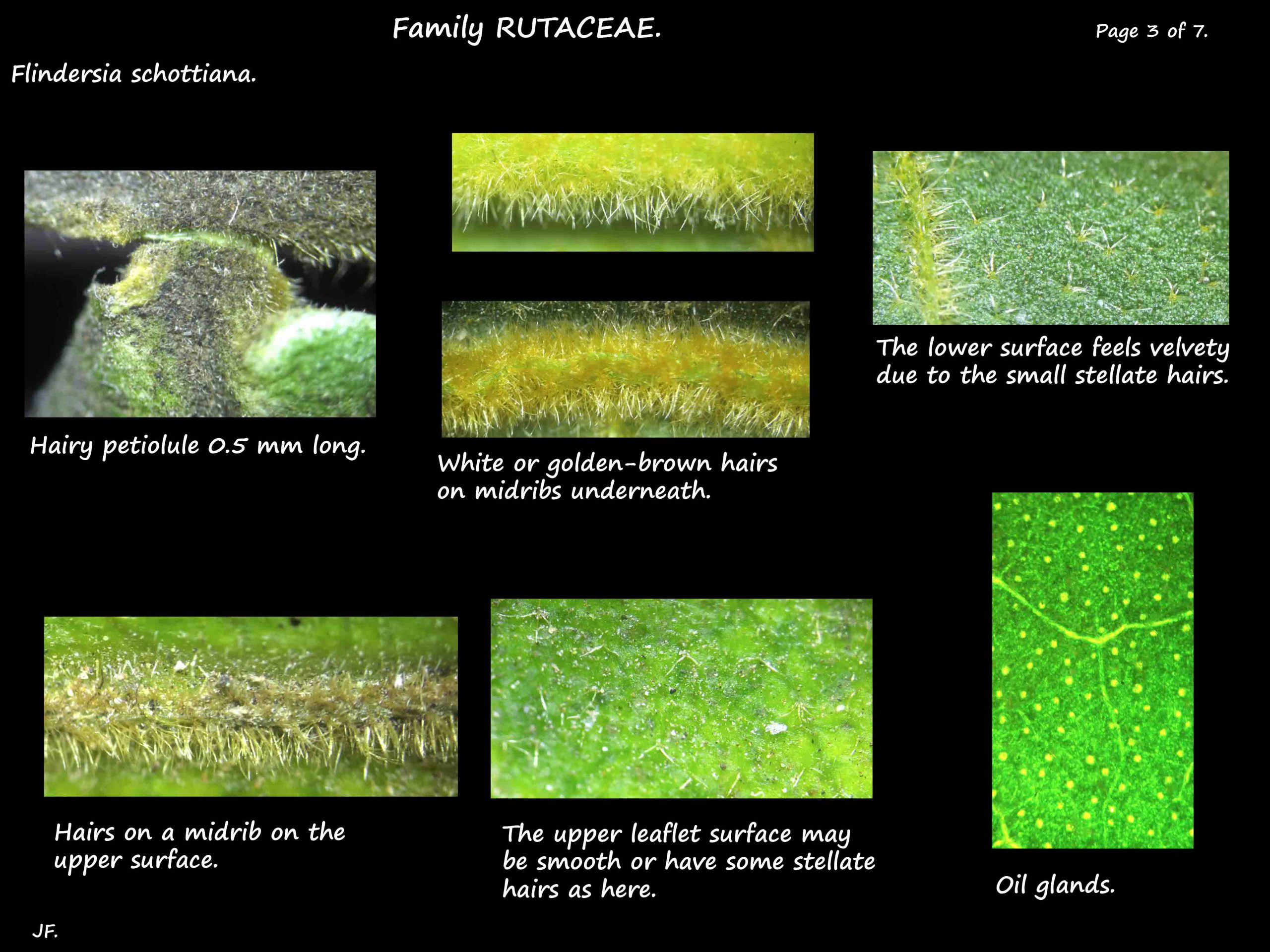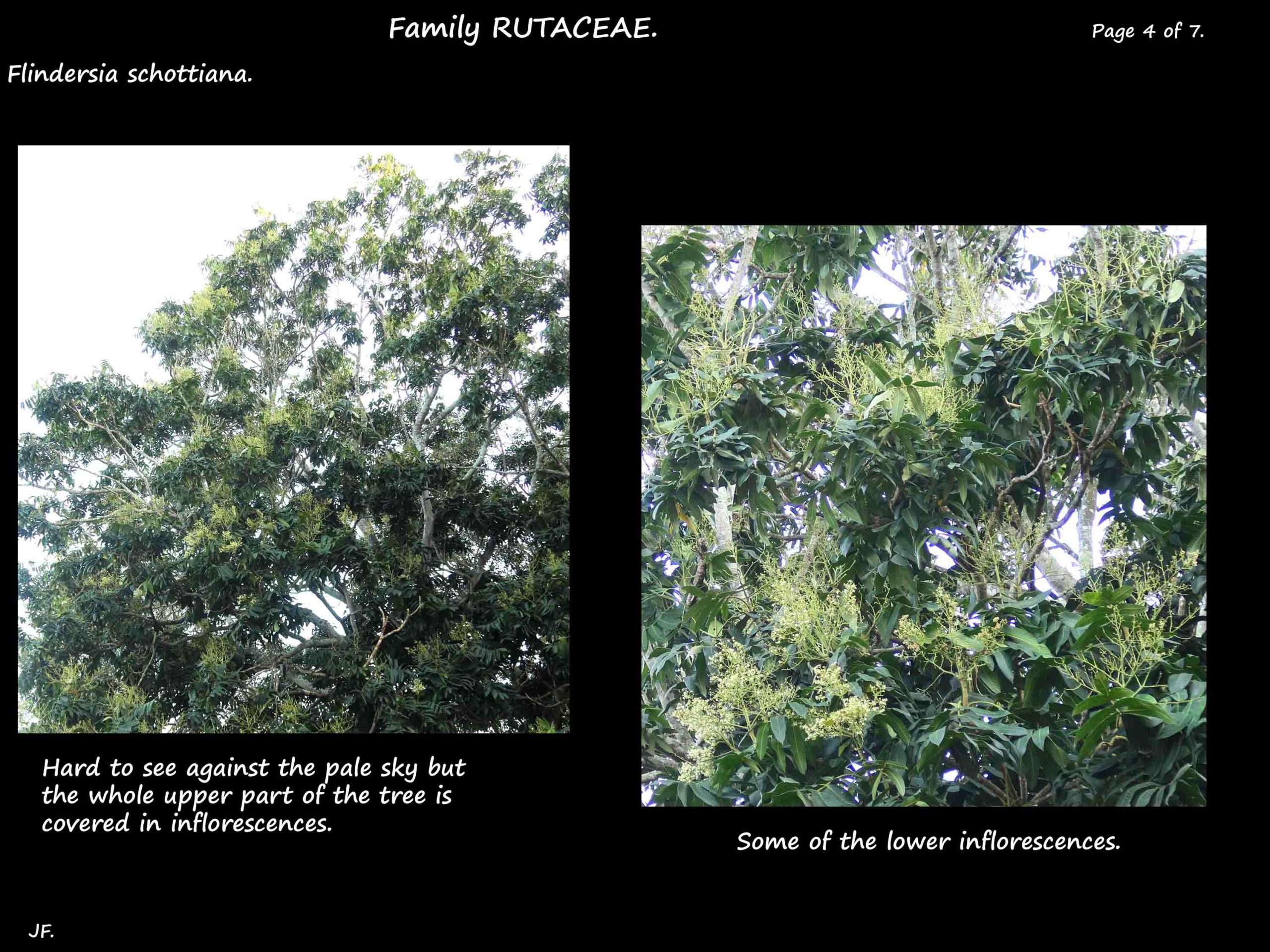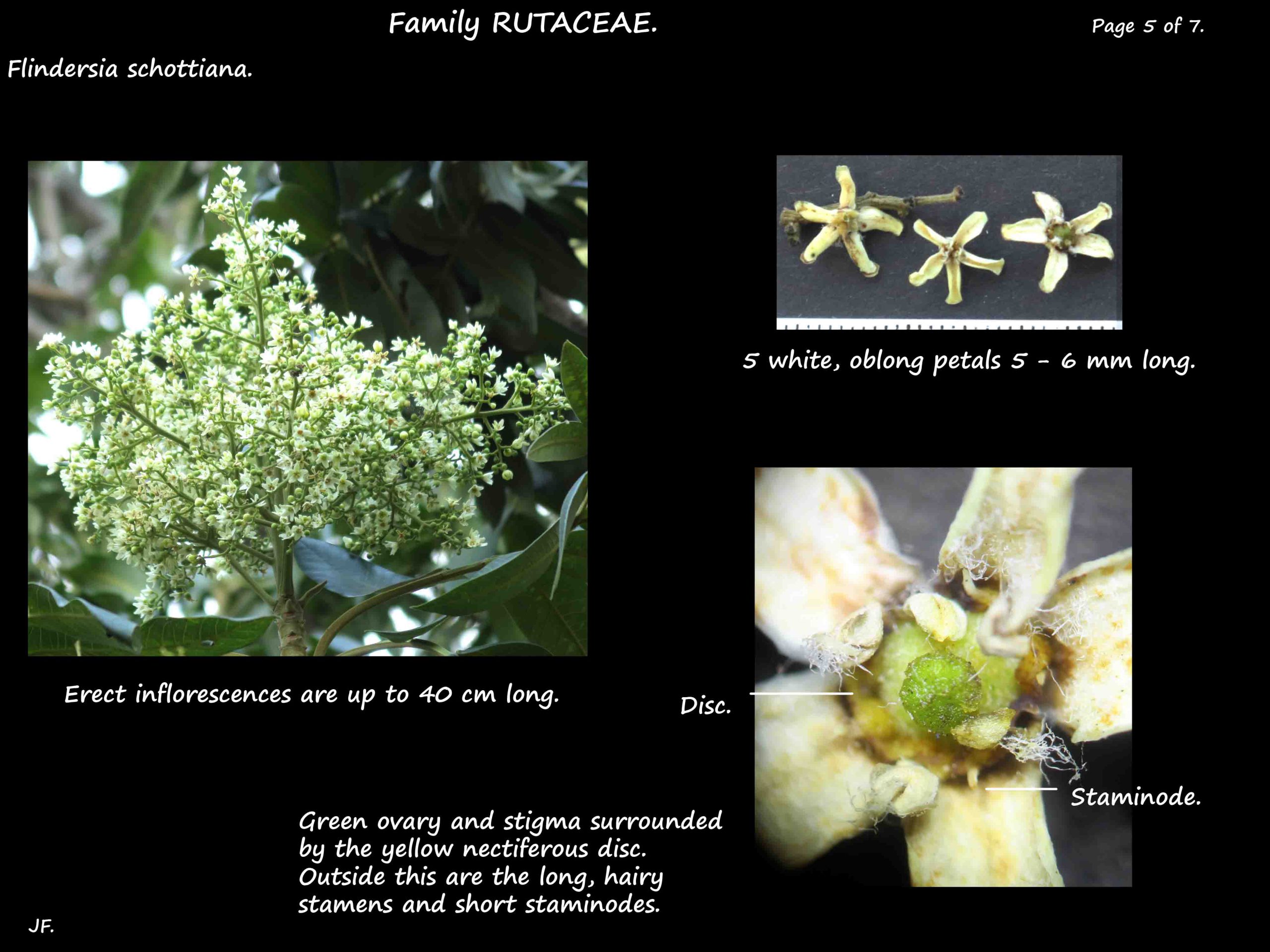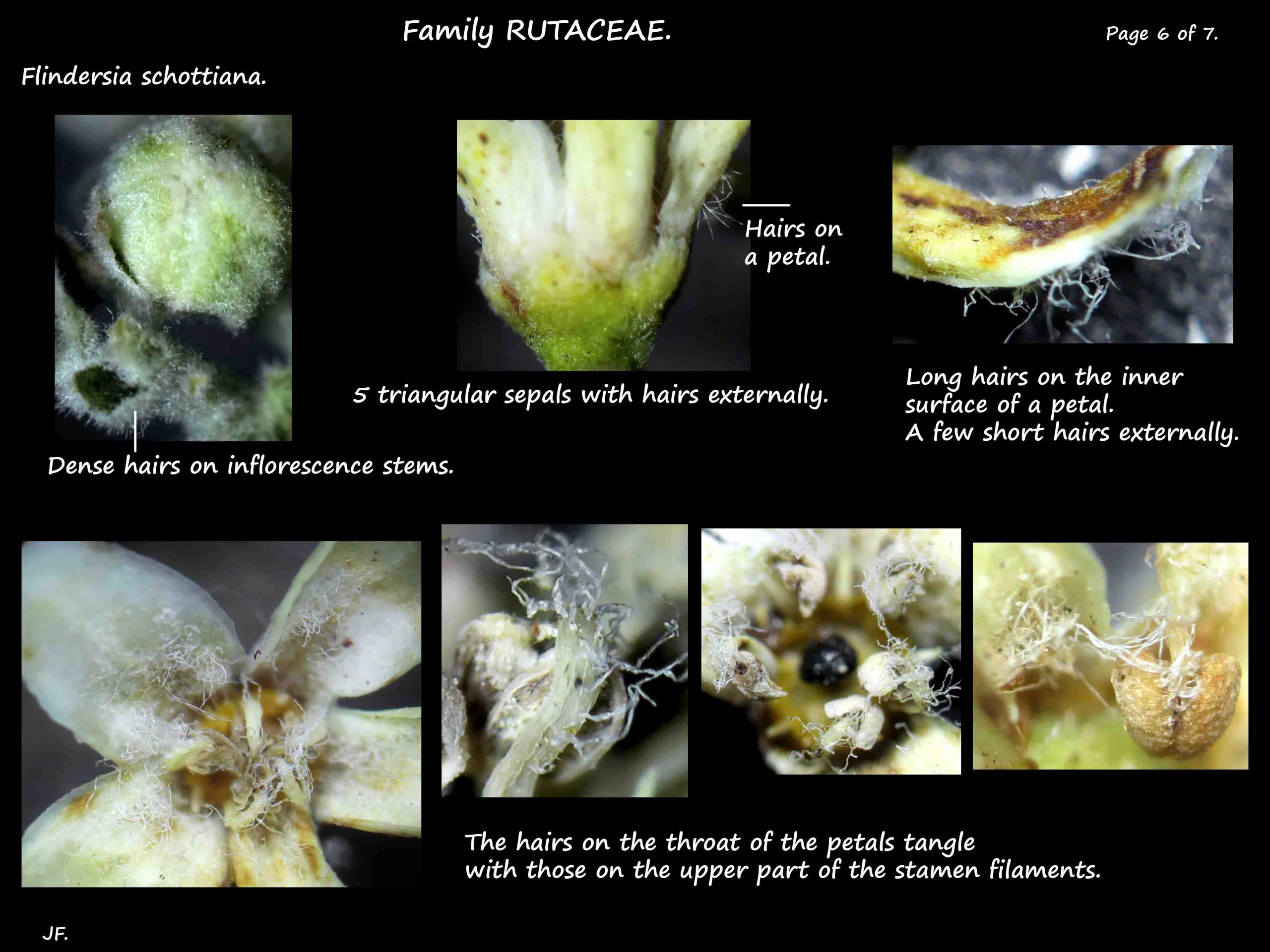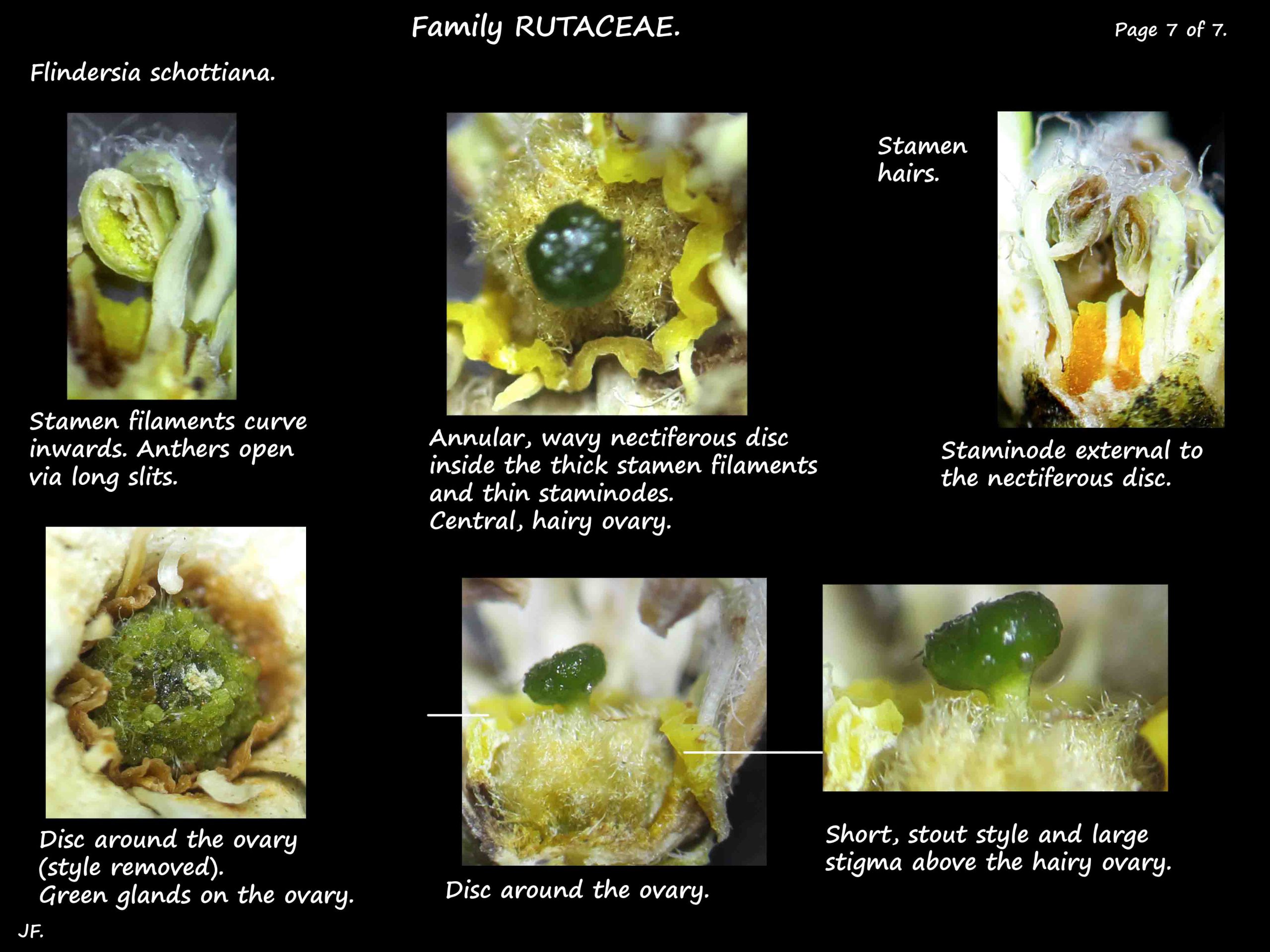Flindersia Schottiana.
Also seen as F. schottiana var. pubescens or F. pubescens.
The Cudgerie or Silver Ash, in Family Rutaceae, is common in Queensland.
A semi-deciduous tree 25 to 30 (50) m high with a rounded or spreading crown.
Its horizontal spread can be 15 to 25 m.
The trunk has pale grey bark and bumps where side branches have fallen off.
The branchlets are covered in stellate hairs.
Compound leaves, to 54 cm long, are opposite or almost so.
The midrib has no wings or, if present they are under 1 mm wide.
There are 7 to 19 (9 to 17) leaflets but occasionally the terminal one is absent.
Lateral leaflets have no stalk or one up to 2.5 mm long.
When present, the terminal leaflet has one about 2.6 mm long.
The leaflets are around 15 (4 – 22) cm long by 1 to 6.5 cm wide.
Leaflets can be narrowly elliptic or oblong and are slightly curved (falcate).
The tips are rounded or gradually taper to a point.
The base is wedge or heart-shaped and asymmetric or oblique.
Dark green leaflets can be dull or glossy on the upper surface and paler underneath.
There are often stellate hairs, especially underneath but they may be few or absent.
There are closely spaced oil dots over the whole blade.
There are 15 to 30 lateral veins.
Terminal inflorescences are erect, branched clusters up to 40 cm long.
Stellate hairs are often present on the stems.
The small, bisexual flowers, with parts in 5’s, are white.
The widely ovate, hairy sepals are 1 to 1.5 mm long.
The oblong petals are 4 to 6 mm long with a few hairs inside the throat.
The hairs on the outer surface lie flat.
There are 5 stamens with hairs near the top of the filaments.
The stamens, and the 5 staminodes, all curve inwards.
Inside these is a continuous yellow, nectiferous disc.
The green, roughly globular ovary, of 5 fused carpels, is covered in glands.
There is a single, short style and a large stigma.
The fruit are hard, woody ellipsoidal capsules that separate into 5 segments.
They are about 7 to 13 cm long.
They can be smooth and hairy or covered in tubercles or prickles.
The thick, conical tubercles are around 5 mm (2 – 10) mms long.
Each segment of the capsule is divided into 2 by a septum with up to 3 seeds on each side.
The 5 to 6 cm long seeds have wings at both ends.
J.F.
